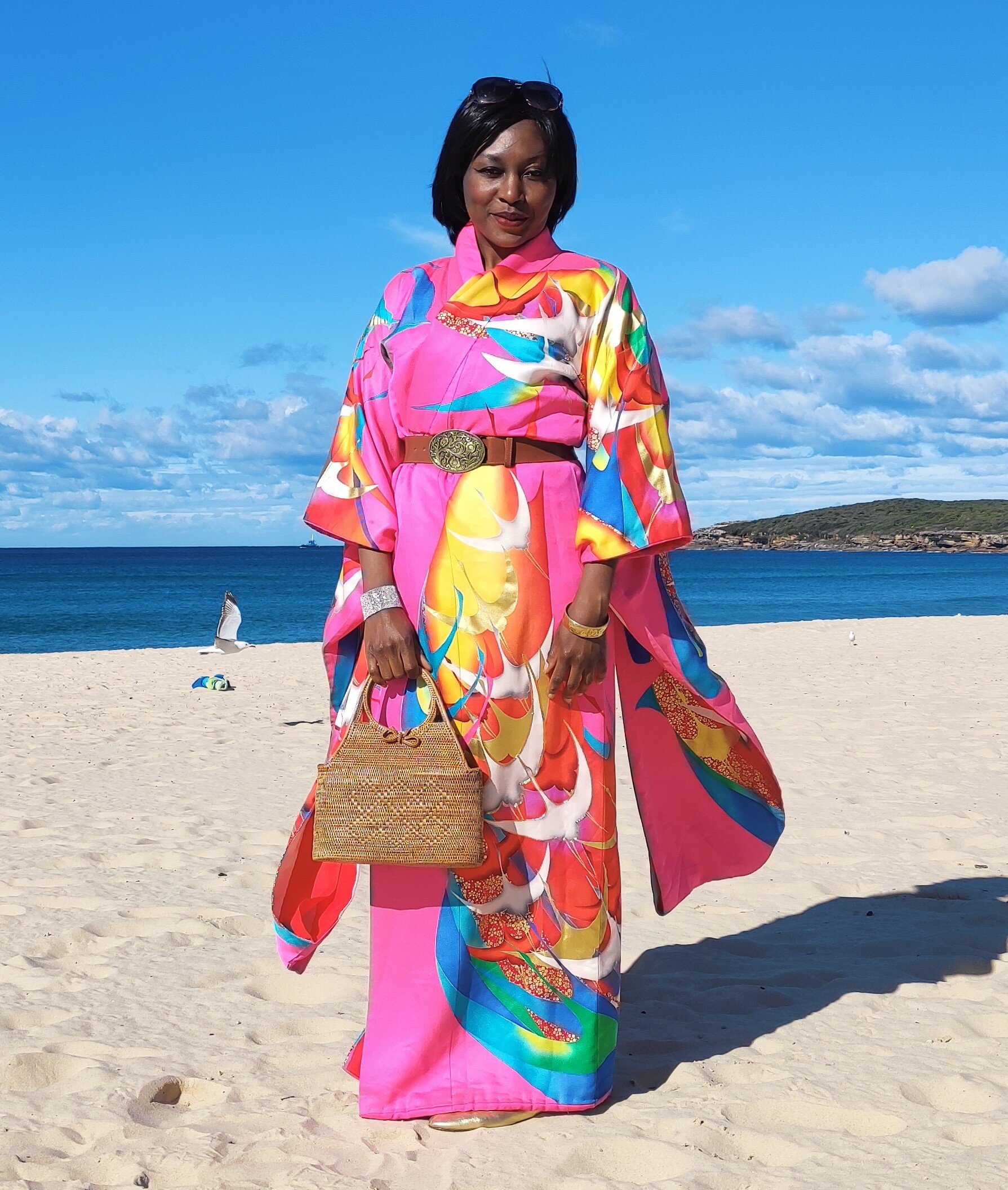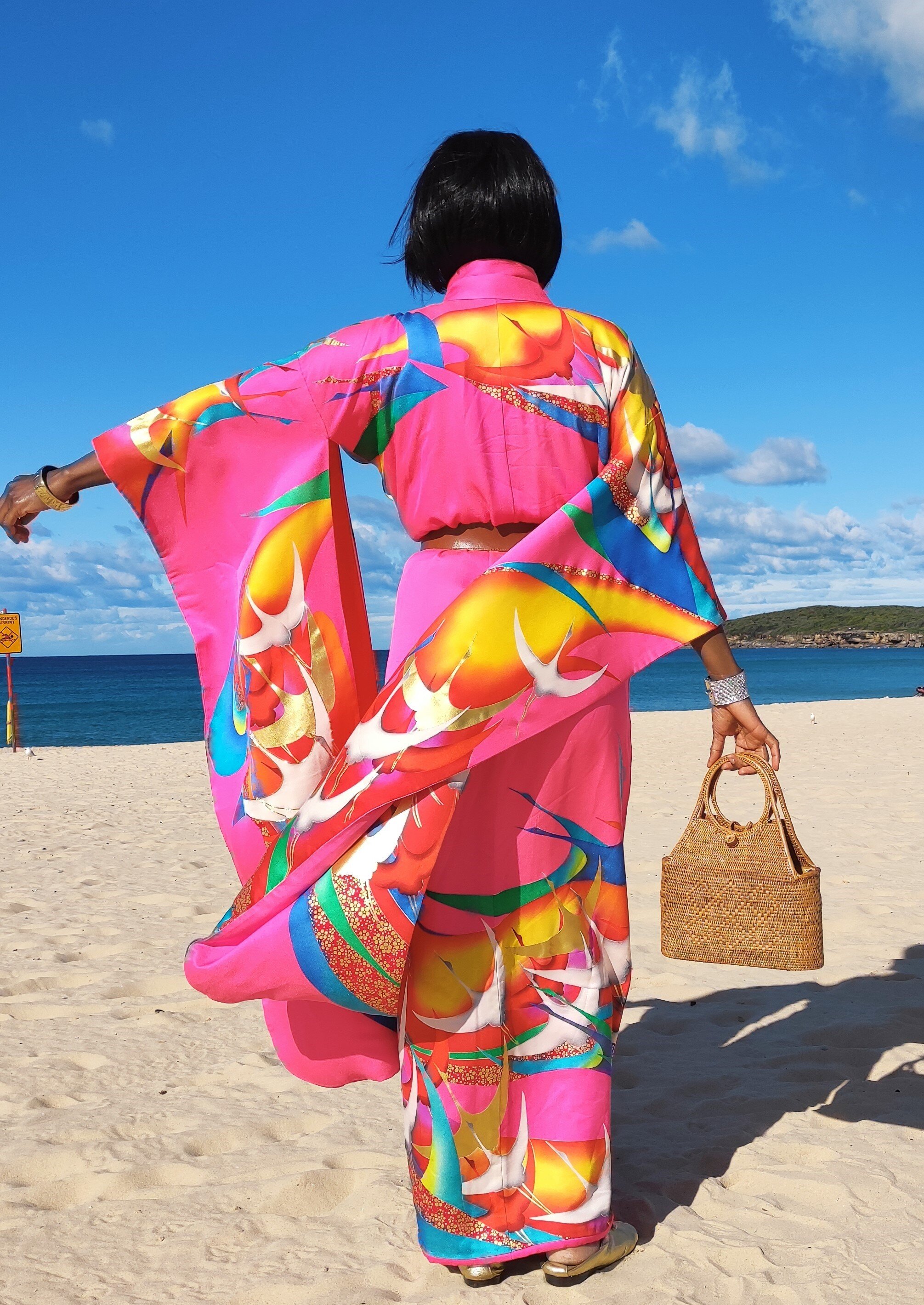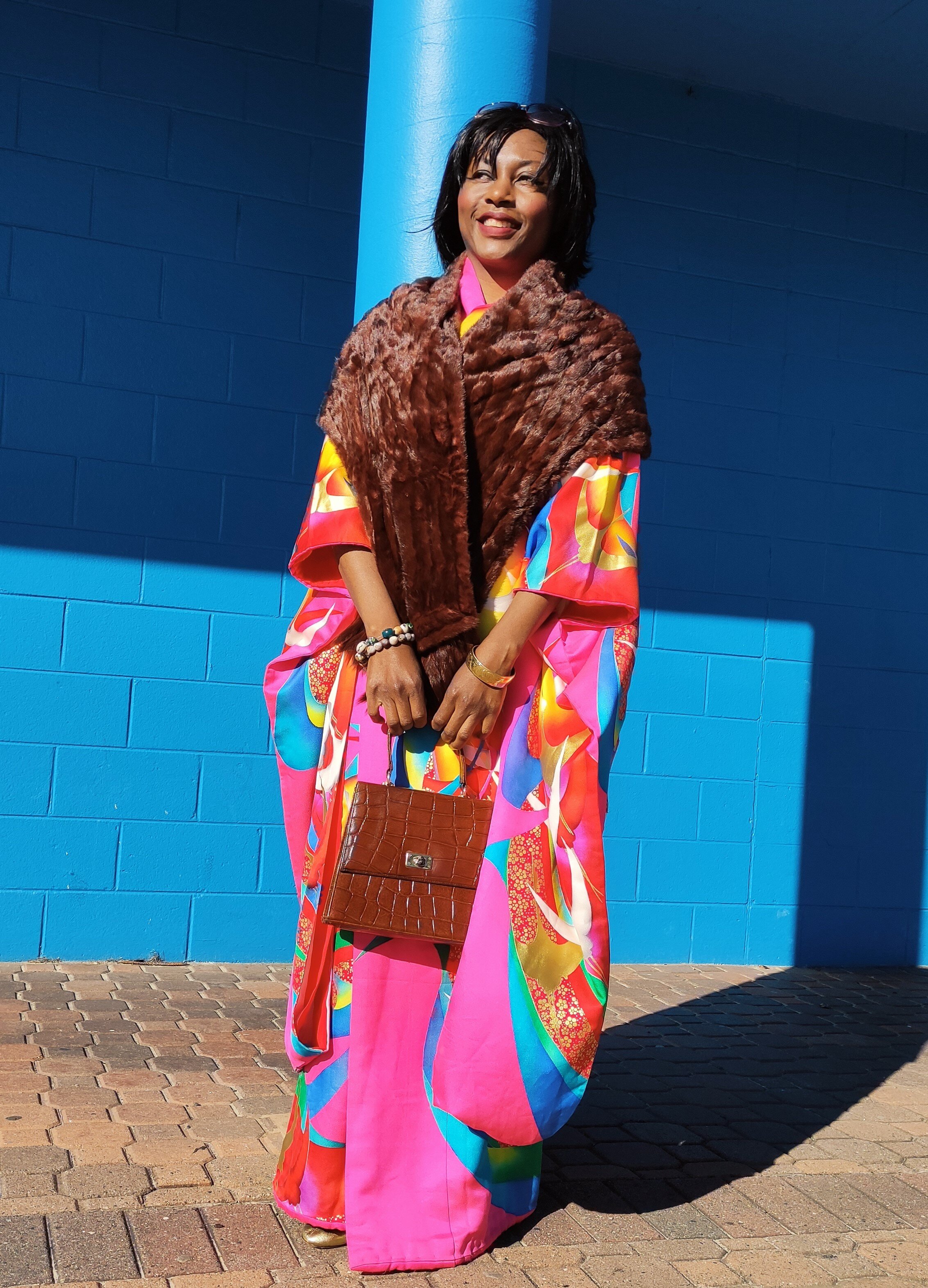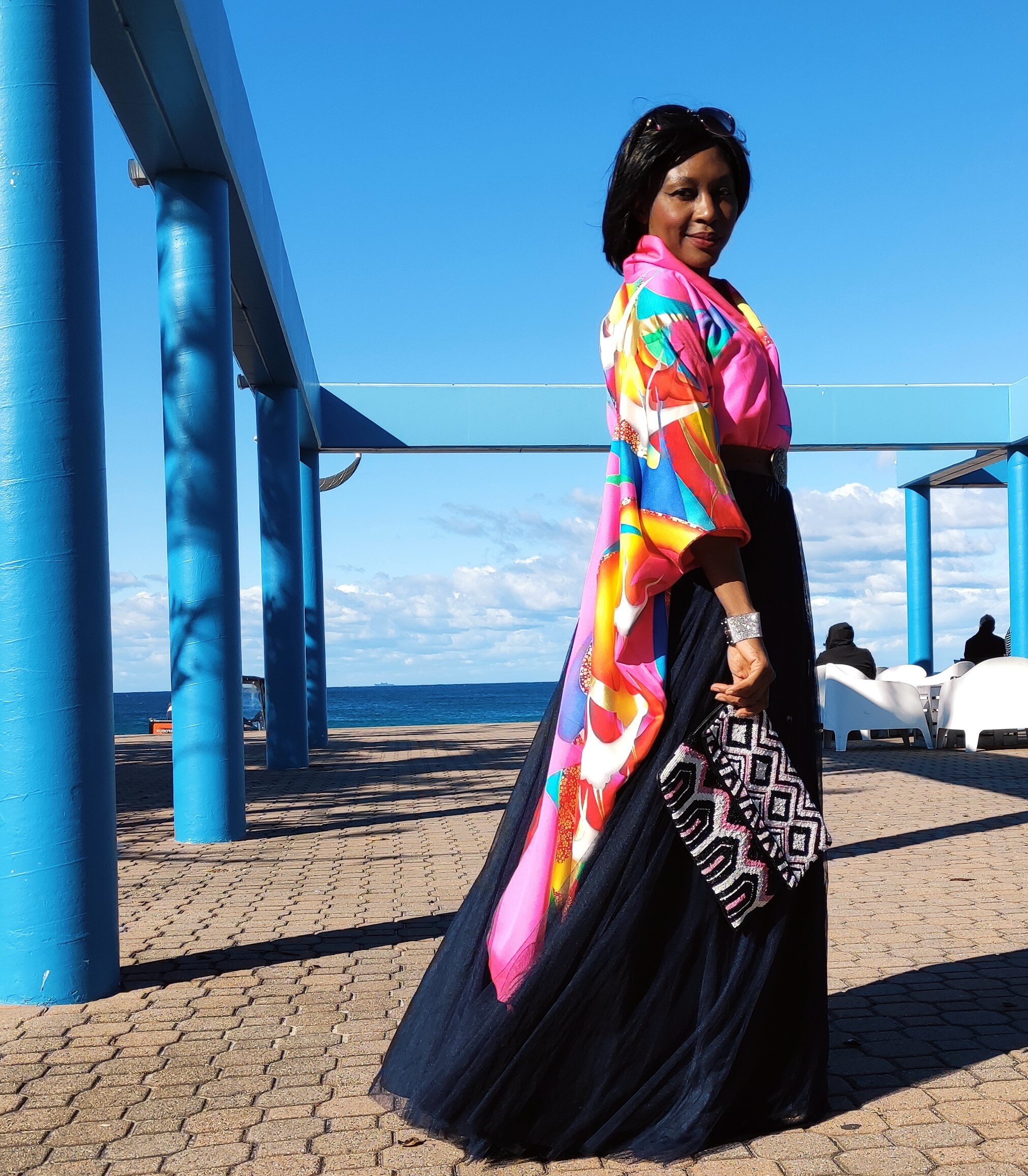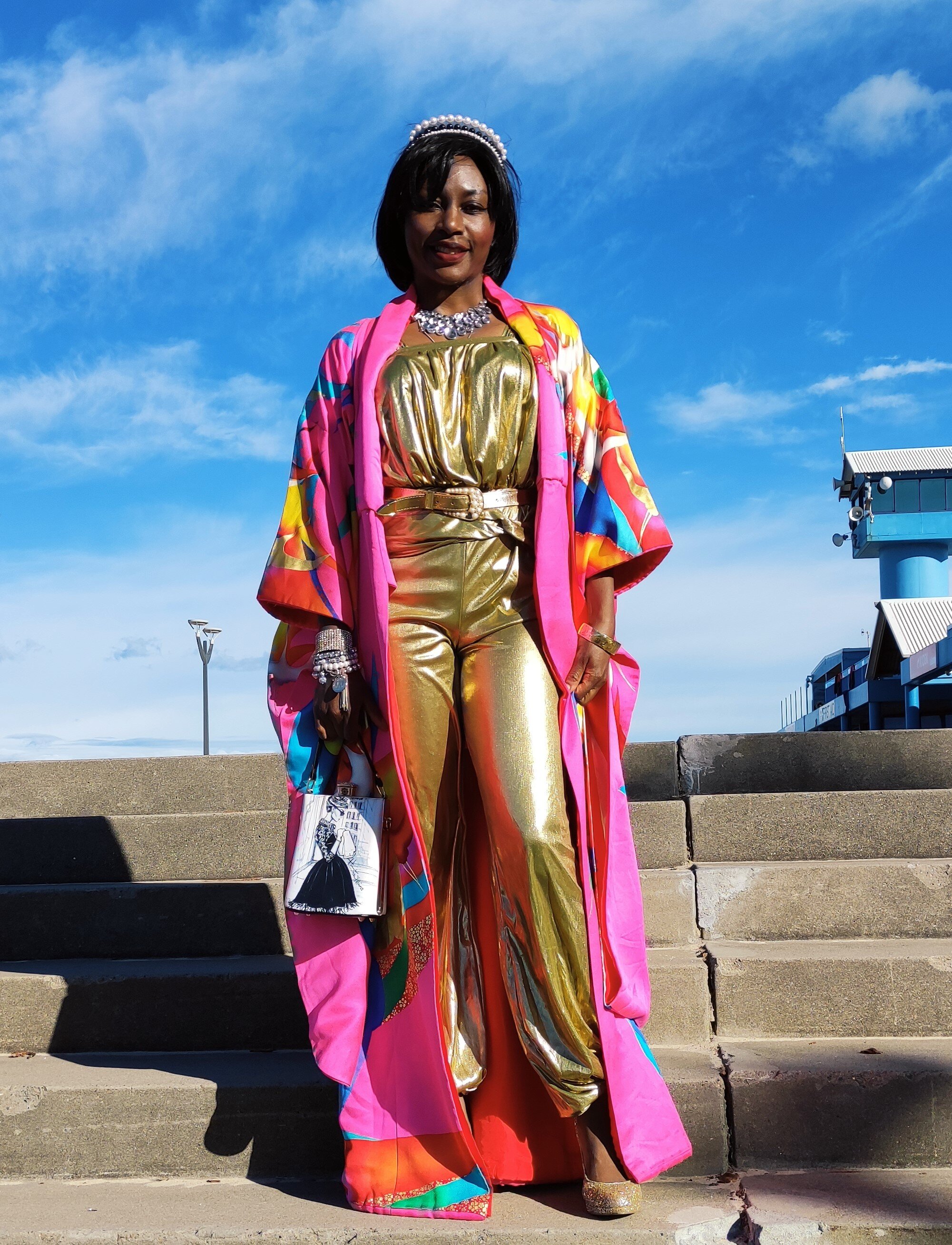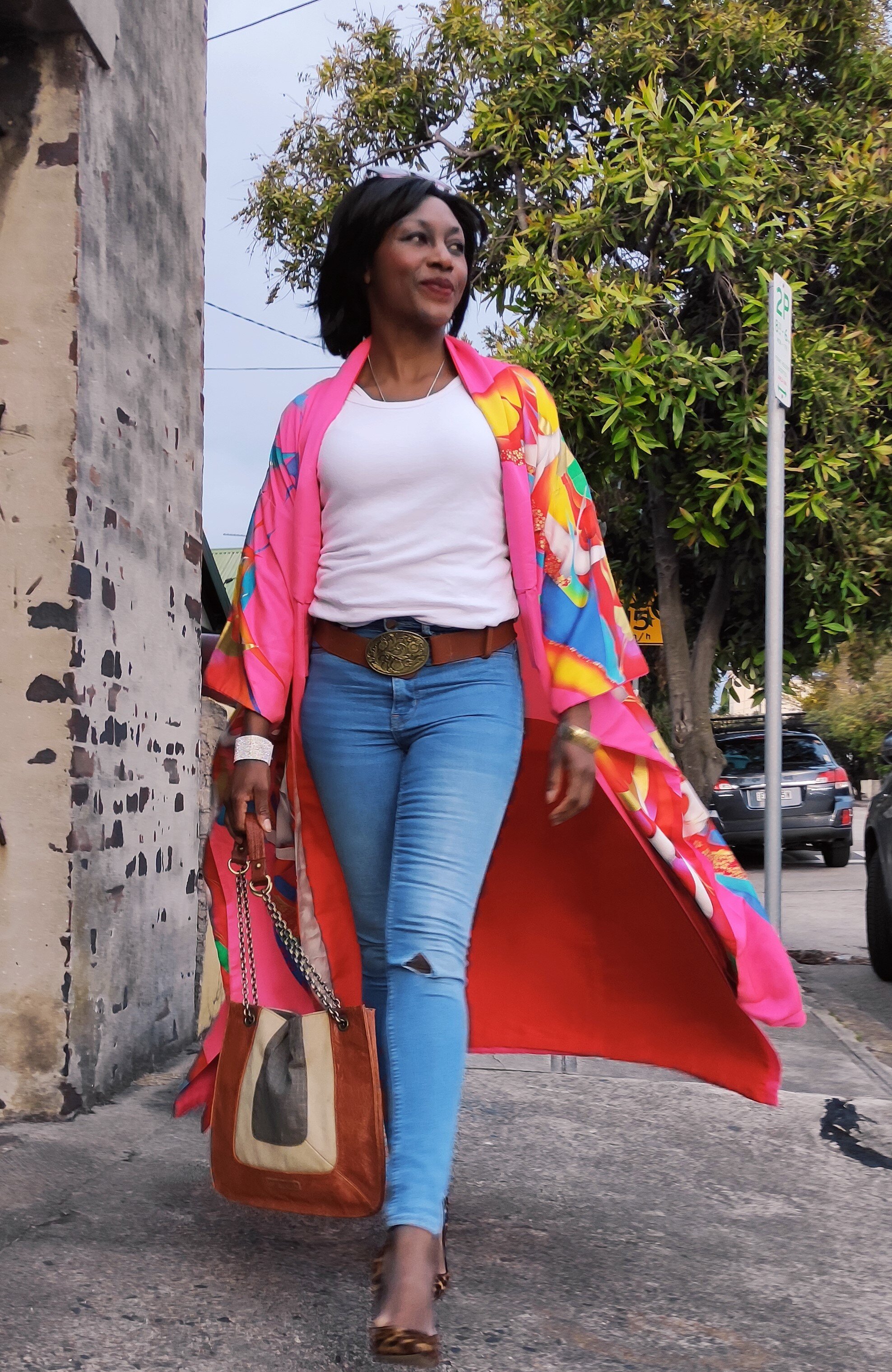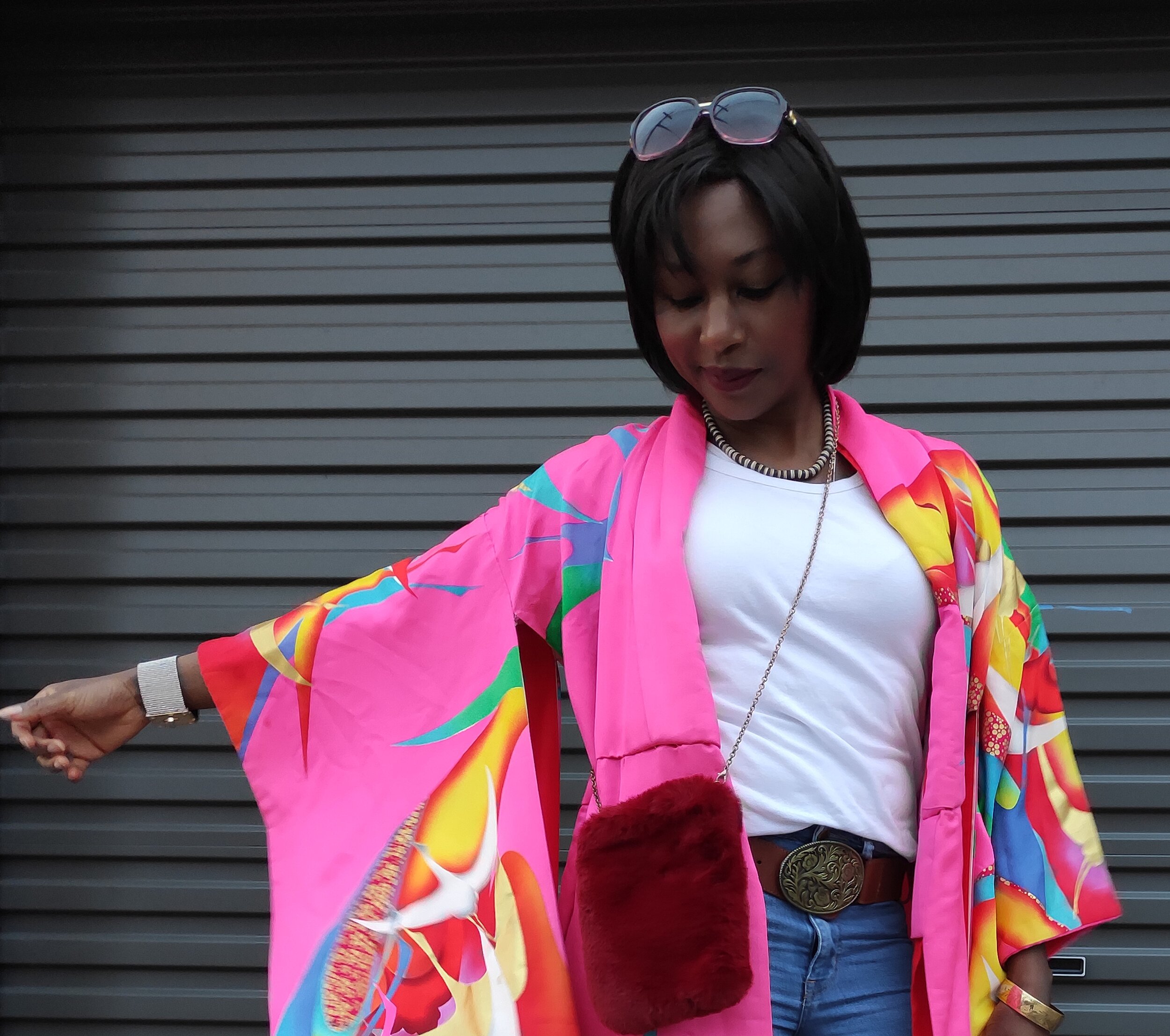In my last article, I wrote about the 2020 #WearTheChange style challenge fundraiser. Wear The Change is a fundraiser created by The Social Outfit (TSO), a social enterprise, charity and ethical clothing label. The challenge is to style an ethical/sustainable garment in a different way (restyle) for five days during National Refugee Week (June 20 – 25). The purpose is to raise funds to help TSO support, empower and train female refugees and new migrants with customised training, education and employment pathways in the fashion industry.
TSO ran the style challenge again this year, so I felt the pressure to up the ante with this beautiful, pink, vintage-retro silk Japanese kimono. The kimono is a post-lockdown present I gifted to myself at the end of 2020 after a very long and intense lockdown period in Melbourne, Australia.
The allure of the kimono
I love traditional, vintage Japanese wedding, ceremonial and casual kimonos. They hold tremendous beauty, art, storytelling, craftsmanship and copious amounts of my attention. Vintage and antique kimonos are some of the most beautiful garments ever created in my opinion.
By choosing a kimono for the 2021 restyle challenge, I made it harder because it’s rare to see a wide variety of kimono restyled looks. But I chose it nonetheless because this pink one is an exquisite piece with vibrant colours that inspire tremendous amounts of awe, joy and MAGIC.
If my knowledge is accurate then I believe this kimono is a wedding kimono called Hikifurisode (a kimono with long, flowing sleeves and a padded, trailing hem). It’s a more modern take on the traditional wedding kimono, likely from the late 1980s. I’ve been told that it might have been a wedding or ceremonial piece for a young woman. And it's 100% silk.
Retro-vintage kimono styled with a 1930 / 1940s vintage fur cape from an op shop. Paired with a 1950s handbag from a vintage shop.
Regarding Asian-made
In addition to being my challenge centrepiece, it’s also a conversation piece for important topics like the perception of products made in Asian countries. In the fashion world and other industries, we hear comments like 'cheap Asian stuff' or 'cheap Chinese stuff' flooding the fast fashion markets. However, the fast fashion model thrives because we indulge it. In many cases, it’s fast fashion brands in the global North that commission the manufacture of cheaply made fast fashion products in Asian countries. Because labour is cheap in those parts of the world, it’s easier to exploit workers in those countries. Then it’s the consumers that help this concept to continue when we buy and consume fast fashion in droves without demanding that brands pay living wages and decent work conditions for garment workers. Perhaps we can shift the notion of perceiving Asian countries simply as where cheap products come from. Instead, we can shift perspective and engage more respectfully with Asian and other regions where products are made by acknowledging the craftsmanship, art, meaning and storytelling behind the art that’s native to these regions. The traditional kimono is a case in point. Because the history, skills, dexterity in making the products, traditions and symbolism are not cheap. They deserve respect.
Retro-vintage kimono styled with a preloved gold jumpsuit, preloved jewellery and gold court shoes. All from op shops. The look is completed with a white purse.
Retro-vintage kimono styled with a retro t-shirt, preloved blue jeans, yellow sneakers and rattan box purse. All from op shops.
The Social Outfit fundraiser for National Refugee Week
For the second year in a row, I’ve joined in the challenge to contribute to raising awareness and raising funds towards helping The Social Outfit support, empower and train new migrants and female refugees with customised training, education and employment pathways in the fashion industry. Only 20% of women from refugee backgrounds are engaged in the workforce. Work empowers women and employment is important for a positive settlement experience. The focus is on the first Australian jobs because the first job is the hardest to get. 85% of people who have worked at The Social Outfit have moved on to other employment. Empowering women is critical because when women are empowered, the community, society and the entire nation benefits economically, socially and in many other ways.
And 49 people have been employed since 2014, paying over $846,000 AUD in Australian award wages. Almost 500 people have participated in their training programs.
By donating, you can help this legacy to continue to thrive and to grow. It won’t solve the global refugee crisis, however, it’s an exemplary model of how refugees and new migrants can be empowered to successfully and beneficially integrate into society in a highly productive way for everyone. The fundraiser continues. On that note, TSO and I will be tremendously grateful for donations to their work through my fundraising link here: https://wear-the-change.raisely.com/nina-gbor. Thank you!
Retro-vintage kimono styled with a preloved navy, tulle maxi skirt and preloved tan belt. Both items from op shops. The beaded clutch purse was a hand-me-down.






